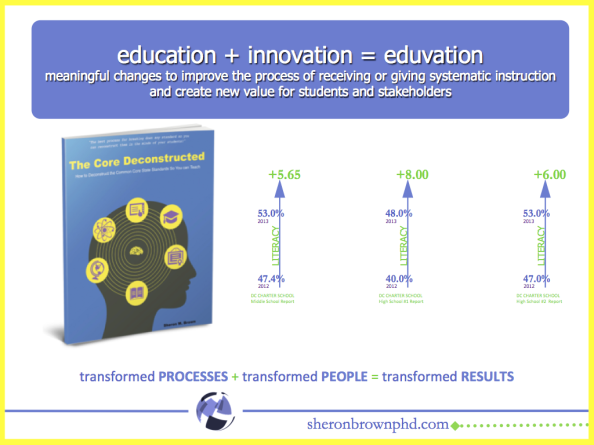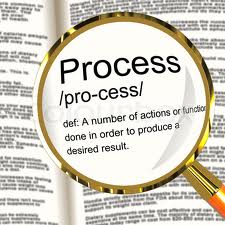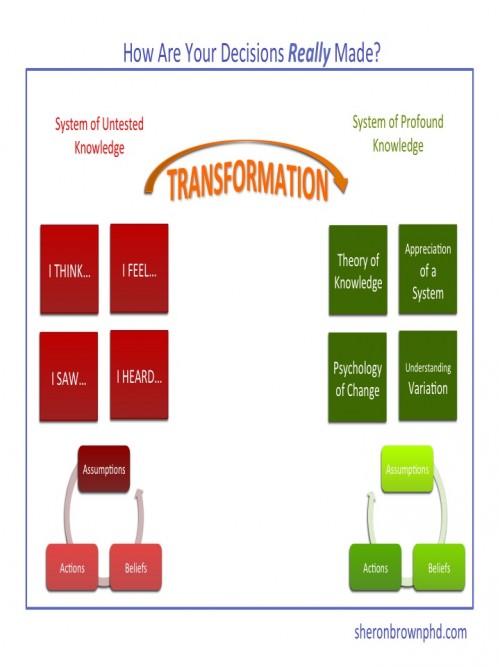Last week I was called by one of my son’s teachers because she felt disrespected by him. Later that evening as he and I discussed the situation, in all of his 16-year old self-focused wisdom, he could not understand how simply expressing himself was him being disrespectful. Rather than beat him down into submission with my words, I stopped, took a deep breath and silently asked myself “how can I get him to see someone else’s point of view?” And then the answer came to me.
I asked him, “Did you ever see the movie Vantage Point?” He opened his mouth to respond, became silent instead, then laughed. I asked, “Why are you laughing?” He replied, “Because I know what you are going to say.” I continued, “So do you understand your teacher’s point of view?” After a brief “lessons learned” discussion, he empathized with his teacher and indicated that he would apologize to her the next day.
Life’s experiences always prepares us for the next opportunity to learn. The next day I was reminded of Vantage Point.
In preparation for an upcoming book, I was gathering qualitative data from a teacher about her classroom practices on close reading. A few minutes into our time together, it became apparent that she needed to clear her mental space in order to be fully present with me. We agreed to 10 minutes of “clearing.” Her venting created a number of insights for me, one being, I wonder how her administrators view this scenario?
With her permission, I’m sharing a Part 1 of her “space clearing” today and Part 2 next week because I want all of us to have the opportunity to reflect on a number of points she implied. As such, I challenge you to reflect with these questions after you read:
- Is there such an undercurrent at my school?
- If I say no, how can I be sure?
- If I say yes, what can I do about it?
As you read her thoughts, please note that she is an effective teacher who demonstrates consistent growth annually, and exceeds her targets. She’s skilled at engaging traditionally low performing students in critical thinking, and has the ability to excite students about learning. I note this because some of her comments are normally attributed to “excuse makers.” This teacher works until 9PM weekday evenings and on Sundays to prepare for her students. She is no excuse maker.
Now that we are clear about her work ethics, here are the confessions of a 21st century teacher.
“So we had this PD the other day and in this PD I was listening to these teachers talk about this new program we’re using.” She held up a teacher’s manual to show what the PD was about and continued. “That’s the book we’re using. So it’s a nice simple book, right? It doesn’t seem like too much; however, there’s another book we have to use with this.”
“With that being said, I’m listening to these teachers in the PD because they went to the workshop to get the,” using air quotes and a hint of sarcasm, “training.” “And they’re like,
Oh, I was “trained,” again she emphasized with air quotes.
“You weren’t trained. What you got was an overview. You weren’t really “trained” [air quotes again] because I don’t know how people can go to a one-day training and now ‘I know it.’ No. You have an overview. See and that speaks volumes about these products that people are selling and pushing because” and she leaned in toward me, “if you spent X amount of time developing this product how can a person can come into your PD and do it in a couple of hours?” She fanned the idea off and leaned back in her chair with her head turned to the side.
Then looking directly at me she exclaimed, “It’s a scam. It’s a scam!”
The teacher took a breath to continue. “Okay so with all of that being said, with [vendor product name deleted] like many other products they give you so much material and that’s great. But these teachers were talking about,” as she transformed her voice to sound nasally to imitate her colleagues while enumerating on her fingers,
I um…well first I scaffold my lesson, then I give a question, and then the question I put it in a separate time of the day and later after lunch we come back to the question because that means we’re still talking about the book and then I give them a question at home. So that means even when they’re home, they’re still talking about the book. They’re very…”
Ms. 21st Century Teacher returned to her own voice saying, “I’m listening to all this talk and I’m like they are not doing all of this. There is no way in the world they are doing all of this with their kids. They are lying. Then I looked around and realized that both APs (Assistant Principals) were in the room.”
She looked up seemingly re-enacting her Aha-moment for me and said, “Yep! They are putting on a show. Okay. Yeah. I get it.”
“Because I’m like at the end of the day, when do we do all this? You pull them out of this group, and you pull them out for that group.” She characterized the pulling of students with her hands as she moved her body from side to side. “And you pull them out of this group and make them do this, and then you pull them out of that group and make them do that and you do this activity and you do that activity and then you do this activity and then you do this group activity.” She opened her arms as if to emphasize a whole group activity. “Then you do—you’re doing this every single day? Every single day? And when they [the students] do that state exam, they [the leaders] want to know can I ask your kid a question and that kid responds to the question in a complete set of sentences? If not, you wasted time with all these other THINGS” [things emphasized].
“In my head I’m thinking why are they…but then another teacher and I were both like, ‘Im not doing all that’,” she remarked as she shook her head and slightly glided her eyes toward the top right-hand corner of her eyelids. “No one cares. No one cares when you are doing all these great things.”
“I’m just venting right now,” Ms. 21st Century Teacher sighed.
But as quickly as she took her break to indicate she was venting, she rolled out the accompanying thought with as much exacerbation as before her sigh asserting, “And the evidence and the proof of that is…” now imitating an administrator on her classroom intercom, …”Ms. 21st Century Teacher will you please come into my office?”
“Beep,” the teacher imitated the intercom in her room. “Okay, I’m coming to your office.” She replied in a pollyannaish manner.
She shuffled then gathered a host of loose papers on a student’s desk where she sat and began to point to them while looking over her glasses as if she were the administrator and I was the teacher. She continued with her issue. “And then when you get to the office,” again imitating an administrator she declared, “Your scores for your students on the state exam are…” Ms. 21st Century Teacher paused as if to imply that the scores were all that was cared about. Then she tossed the papers to the side.
“No one talks to you about what you have them doing. No one talks to you about whether or not you’re doing a think-pair-share. No one talks to me about the fact that I have them using creative transitional words, that I have them learning how to do a grabber sentence, that I’m putting them…um…having them do a 5 paragraph essay in the third grade. Nobody cares about that.” She leaned over to the side, slammed her hands on the desk, grabbed the pieces of paper she previously threw down and asked while being back in character as the administrator, “What’s your state exam results?”
The papers landed once more on the desk scattered by her frustration.
The venting progressed. “Nobody cares what I’m doing with my kids in Social Studies, nobody cares that my kids can say ‘I know who the prime minister of England is. I know how many countries there are in Africa. I know Africa is the second largest…’ They don’t care that the kids have this new body of knowledge. No one cares!”
“I’m saying all of that to say this. When you have teachers saying all of this bull@*%# about ‘I do this with my students…’ [breath.] Uhg!”
She paused as if she were complete. Then she continued.









